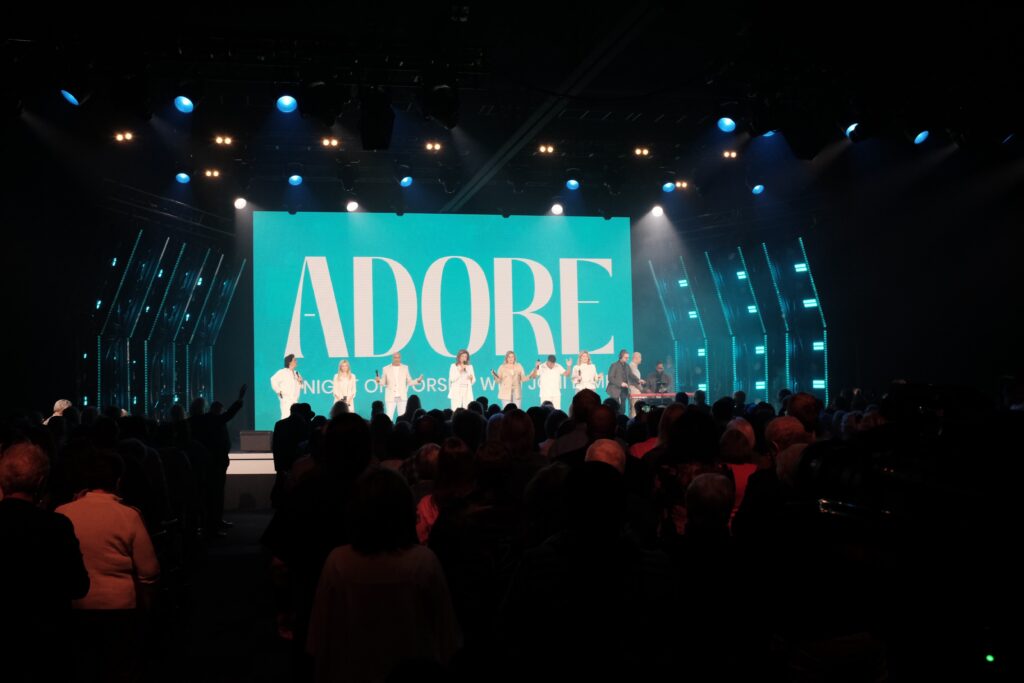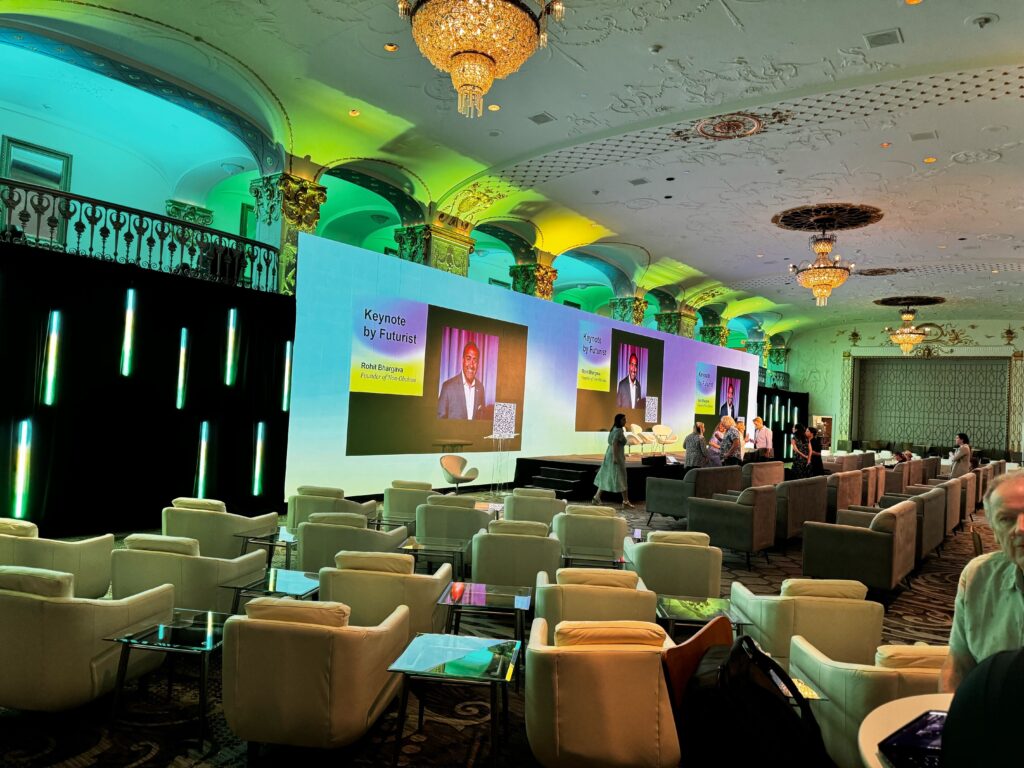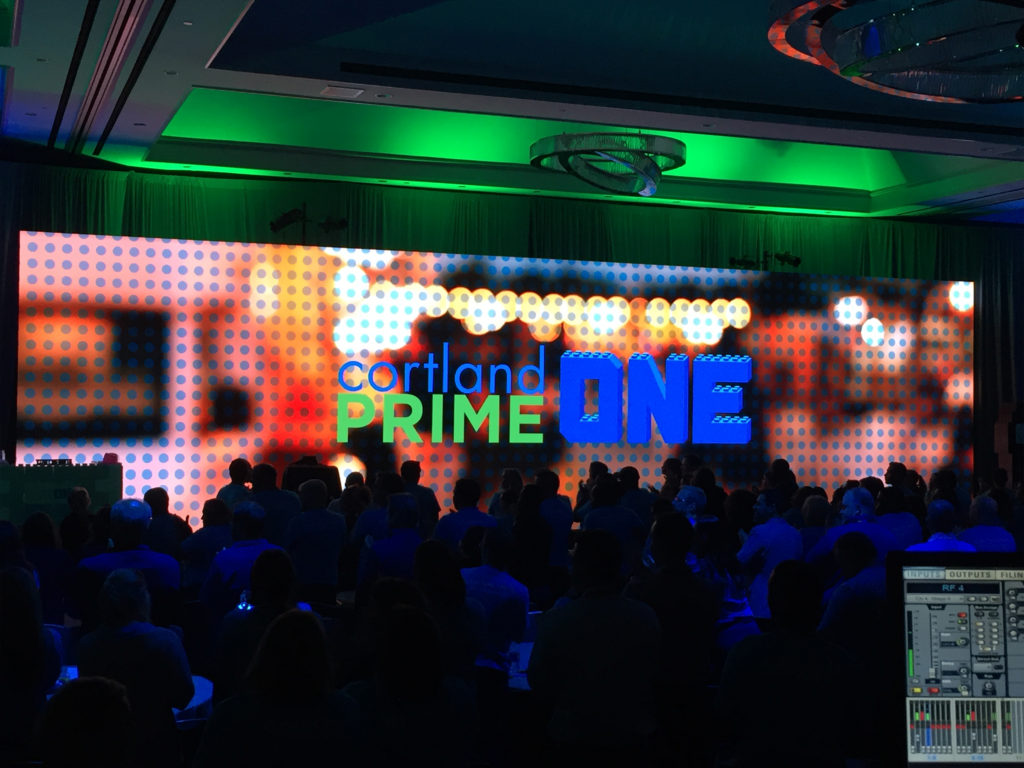Key Considerations for Impactful Events
Designing a stage setup with LED walls can transform any event into an unforgettable experience. The right LED wall design enhances visual impact, improves audience engagement, and ensures that the content resonates well with viewers. Understanding how to effectively plan and implement this technology is key to achieving a successful stage design.
When incorporating LED walls, it is essential to consider factors like layout and content while ensuring safety and proper installation. Thoughtful design attracts attention and creates a captivating atmosphere, making it critical for event planners to be well-informed about technical requirements and on-site operations.
By focusing on strategic installation and operation of LED walls, event professionals can elevate their productions to new heights. They should be equipped with the knowledge needed to navigate the challenges that come with this modern technology.
- Effective planning is crucial for a successful stage setup.
- Safety measures must be prioritized during installation.
- High-quality content enhances audience engagement.


Understanding LED Walls
LED walls are advanced visual displays that enhance stage setups with vibrant imagery. They consist of individual LED panels that create a large, seamless screen. This section explores the technology behind LED walls, the different types of LED panels available, and the advantages they bring to stage design.
Technology Behind LED Walls
LED walls operate using light-emitting diodes (LEDs) arranged in grids. Each LED corresponds to a pixel, which produces bright and dynamic images. These panels can be combined to form larger displays.
Key aspects include:
- Pixel Pitch: This refers to the distance between pixels. A smaller pixel pitch means a higher resolution, suitable for close viewing.
- Brightness Levels: LED walls are known for their high brightness, making them visible in varied lighting conditions.
- Signal and Power Distribution: Proper management of power and signal is essential to ensure stable performance and image quality.
Different Types of LED Panels
There are several types of LED panels, each designed for specific purposes and settings. Major types include:
- Standard LED Panels: Used for general displays, they provide good brightness and quality.
- Curved LED Panels: These panels can create rounded displays for immersive effects. They are often used in creative stage designs.
- Transparent LED Panels: Ideal for installations where visibility through the display is important, like retail or event spaces.
Each type offers unique benefits, making it important to choose the right one based on the event’s needs.

Advantages of Using LED Walls in Stage Design
LED walls offer numerous benefits in stage design. They enhance visual appeal, creating an engaging environment for audiences.
Some key advantages are:
- High Resolution: They can display sharp images, adding depth to presentations.
- Versatility: LED walls can be used in various settings, from concerts to corporate events.
- Energy Efficiency: Modern LED technology consumes less power compared to traditional screens while providing better brightness.
Using LED walls allows designers to create captivating backdrops that adjust to different themes and messages.
Planning Your Stage Layout
Creating a successful stage layout involves careful consideration of dimensions, audience sight lines, and the integration of LED walls. Each aspect plays a crucial role in ensuring that the performance is both visually appealing and accessible to the audience.
Determining Stage Dimensions
When deciding on stage dimensions, it is essential to consider the type of event and the space available. Typical stage sizes can range from 16 to 32 feet wide and 12 to 24 feet deep.
Factors to consider:
- Event Type: A concert may require a larger stage compared to a theater production.
- Venue Size: Ensuring the stage fits well within the venue without overcrowding is vital.
- Performance Needs: Accommodate set pieces, performers, and any equipment used during the event.
Using a scale model can help visualize space needs and ensure the design meets all requirements.
Audience Sight Lines and Viewing Angles
Audience sight lines are critical for allowing the audience to see the action on stage without obstruction. Proper planning ensures that every seat offers a good view.
Key considerations:
- Seating Arrangement: The seating should be designed in a way that all viewers can see the stage clearly.
- Stage Elevation: Raising the stage can help improve sight lines for audiences in the back rows.
- Audience Capacity: Consider the number of seats and ensure that sight lines remain effective without compromising safety or comfort.
Regular adjustments and simulations can aid in optimizing sight lines for different sections of the venue.

Stage Elements and LED Wall Integration
Integrating LED walls into stage design enhances the visual experience but requires careful planning. The placement of these walls is crucial for optimal effect.
Important aspects to address:
- Positioning: The LED walls should be placed where they can be easily viewed from all angles.
- Interaction with Lighting: Lighting arrangements must complement the LED walls to prevent glare and ensure visibility.
- Content Synchronization: Ensure that the images or videos displayed on the LED walls align with the performance flow.
Successful integration will elevate the overall production value and engage the audience effectively.
Designing LED Content
Creating engaging LED content is essential for effective stage setups. This segment will explore how to design compelling visuals, utilize software for LED walls, and synchronize content with live performances.
Creating Compelling Visuals
Visuals play a crucial role in capturing audience attention. High-resolution images and videos are vital for creating a vibrant display. They should be tailored to complement the performance while considering color schemes, lighting, and themes.
Using bold graphics and dynamic animations can enhance the visual experience. It is important to ensure that the text is legible, even from a distance. Simple, clear fonts work best on LED screens.
Important Tips:
- Choose High-Quality Media: Use images and videos that maintain quality on larger formats.
- Limit Text: Too much text can clutter the screen; focus on key messages.
- Utilize Contrast: High contrast between text and background enhances readability.
Software for LED Wall Design
Selecting appropriate software is key to efficient LED content creation. Various platforms offer tools for designing and managing content for LED walls. Popular software options include:
- Resolume: Known for its user-friendly interface, perfect for live events.
- Watchout: Offers advanced multi-screen capabilities for complex setups.
- Madmapper: Excellent for projection mapping and creating visuals in real-time.
These software tools typically support various formats, enabling seamless integration of images, videos, and animations.
Features to look for:
- Real-time editing: Allows quick adjustments during live shows.
- Template options: Pre-designed templates can speed up the setup process.
- Compatibility: Ensure the software works with installed LED hardware.
Synchronizing Content with Performance
Synchronization between content and live performances is essential for a cohesive experience. Content should match the rhythm, theme, and mood of the performance.
Creating an exact timing strategy is vital. This often involves collaboration with performers to align visuals with music and movements.
Using tools like MIDI controllers or software with timeline features can help achieve this synchronization.
Key Techniques:
- Practice Runs: Conduct rehearsals to time visuals accurately.
- Feedback Mechanism: Use feedback from performers to adjust content timing.
- Dynamic Adjustments: Be prepared to make on-the-fly changes in response to live performance energy.
Installation and Safety
Proper installation and safety measures are crucial when working with LED walls. This section addresses mounting techniques, electrical requirements, and essential safety protocols to ensure a successful setup.
Mounting LED Walls
When mounting LED walls, choosing the right method is vital. The three common mounting options include:
- Ground Supported: This is the simplest method, requiring a rear support system. It offers stability but may need space on the floor.
- Flown: This method involves suspending the LED wall from overhead rigging points. It is ideal for saving space and allows for better visibility.
- Wall Mounted: This option involves attaching the wall directly to a solid structure. It’s suitable for permanent installations.
Each method has its own considerations regarding weight, balance, and accessibility. Ensure that mounting hardware is durable and follows manufacturer guidelines for safety.
Electrical Requirements
LED walls require adequate power supply for optimal performance. Key points to consider include:
- Voltage Compatibility: Check if the wall meets the voltage standards of the venue.
- Dedicated Circuits: Use dedicated circuits to avoid overloads. This prevents outages and ensures consistent performance.
- Cable Management: Avoid trip hazards by securing all cables. Use cable trays or covers to maintain a clean setup.
Proper compliance with electrical codes is essential. It enhances safety and reduces the risk of electrical failures during events.
Safety Protocols for LED Walls
Implementing safety protocols is essential to protect people and equipment. Key safety measures include:
- Secure Mounting: Ensure all components are tightly fastened. Loose parts can pose risks, especially in crowded areas.
- Safety Cables: Use safety cables and brackets to prevent falls of mounted walls.
- Site Inspections: Regularly check the installation for signs of wear and tear, especially after moving the setup.
Trained personnel should oversee the setup to ensure adherence to all safety guidelines. This vigilance is critical in high-traffic areas where accidents may occur.
Technical Considerations
Successful stage setups with LED walls require careful attention to several crucial factors. Key aspects include resolution and pixel pitch, calibration for color accuracy, and the necessary connectivity and control systems. Addressing these areas ensures optimal performance and visual impact.
Resolution and Pixel Pitch
Resolution determines the clarity of the images displayed. Higher resolution means more pixels, which leads to sharper visuals. Pixel pitch, the distance between the centers of two adjacent pixels, affects how close viewers can be to the screen.
Common Pixel Pitches:
- 1.2mm: Ideal for close viewing.
- 2.5mm: Suitable for mid-range.
- 4mm: Best for larger venues.
Choosing the right combination of resolution and pixel pitch is essential to create an engaging experience. A lower pixel pitch is usually better for events with a close audience, while higher pitches are permissible for larger crowds.
Calibration and Color Accuracy
Color calibration is vital for maintaining consistent and accurate colors across the LED wall. If the colors are not calibrated correctly, the visuals can appear off or uneven, impacting the audience’s enjoyment.
Key Calibration Steps:
- Black Level Adjustment: Ensures true blacks are displayed.
- White Balance Setup: Aligns all colors properly.
- Color Gamut Mapping: Maintains the display’s range of colors.
Regular calibration checks help keep the display looking its best. This is especially important for events where branding and details matter, as colors can look very different under various lighting conditions.
Connectivity and Control Systems
Effective connectivity and control systems are crucial for managing LED walls. These systems ensure communication between the display and the video sources, enabling smooth operation.
Essential Components:
- Video Processors: Adjust signals for optimal output.
- Control Software: Manages content and display settings.
- Cabling: High-quality cables prevent signal loss.
Choosing reliable equipment that can handle the required resolutions and inputs will enhance functionality. A well-designed connectivity setup allows for easier adjustments during live events, thus minimizing disruptions.
On-Site Operation
Effective on-site operation is crucial for ensuring that LED walls enhance the stage setup. This includes managing rehearsals, live events, and troubleshooting issues that may arise. Each of these components demands careful attention to detail and preparation.
Handling Rehearsals with LED Walls
During rehearsals, it is essential to ensure that LED walls are properly configured. This means adjusting the settings to match the performance’s lighting and backdrop needs.
Technicians should check the alignment of the panels to avoid visual distortions. A level setup is critical. If panels are not aligned, they may disrupt the audience’s viewing experience.
Additionally, rehearsals provide an opportunity to test video content. This includes checking transitions and effects to guarantee smooth operation during the live event.
Communication between directors, lighting designers, and technicians is vital. Regular feedback can greatly improve the setup before the actual performance.
Live Event Management
Managing live events with LED walls involves strict coordination and communication. The technical team should monitor visuals in real time. This ensures that all content aligns with the performance’s flow.
Sound checks must be synchronized with visual cues. Visual effects should enhance key moments, requiring precise timing. The team should also ensure that lighting complements the LED display, creating a cohesive atmosphere.
It is wise to have a backup plan for power sources and content playback. This preparation helps avoid potential disruptions.
An experienced operator should be present to adjust settings as needed during the event. Their expertise can help tackle unforeseen challenges effectively.
Troubleshooting Common Issues
Common issues with LED walls include connectivity problems, display alignment, and content playback failures. Technicians should be prepared with troubleshooting protocols.
If a panel goes dark, quickly diagnosing the issue is critical. This may involve checking connections or rebooting the system.
Alignment issues can often be resolved by recalibrating the panels. Ensuring that the hardware is set up correctly can prevent errors during performances.
Content-related issues may require quick access to backup files. Having reliable playback systems ensures that the performance continues smoothly.
Being proactive about potential problems and having solutions ready can significantly reduce downtime and maintain the quality of the show.
Post-Event Analysis
After an event concludes, analyzing its success is crucial. This involves evaluating the stage design, gathering audience feedback, and identifying areas for future improvement.
Assessing Stage Design Impact
The impact of stage design on the event’s success should be carefully assessed. Key metrics include audience engagement and visual appeal.
- Visual Quality: The clarity and brightness of the LED walls contribute significantly to the overall atmosphere. It is important to note if the colors were vibrant and if images were sharp.
- Layout Effectiveness: Analyzing how the stage layout facilitated or obstructed the flow of the event can provide insights. Did the LED walls enhance visibility?
These evaluations can help determine if the design effectively supported the event’s theme and objectives.
Audience Feedback Collection
Collecting feedback from attendees is essential for a comprehensive analysis. Surveys and comment cards can be utilized to gather this information.
- Structured Surveys: Questions could cover areas such as the audience’s reaction to the LED walls and overall visual experience.
- Direct Engagement: Discussions with attendees can provide valuable qualitative insights. Understanding what captured their attention or distracted them can guide future designs.
This feedback is instrumental in gauging how successfully the design met audience expectations.
Lessons Learnt and Future Improvements
Identifying key lessons from the analysis helps to refine future stage setups. Review previous designs to see what worked well and what did not.
- Adjustments Needed: Documenting specific changes based on feedback, such as arranging LED panels in a different configuration, can enhance future events.
- Technology Integration: Evaluating new technologies, including advanced LED features, can improve the overall design.
By taking these lessons into account, future stage designs can be made more effective, engaging, and aligned with audience expectations.
Frequently Asked Questions
When designing a stage with LED walls, various factors must be considered. This includes the backdrop setup, costs, content engagement, and technical management for live events. Proper planning ensures an effective and visually appealing stage.
What factors should be considered when designing a stage with an LED wall backdrop?
Key factors include the size and resolution of the LED wall, placement relative to performers, and sightlines for the audience. Brightness levels are also important to ensure visibility under different lighting conditions, which can enhance overall impact.
What are the cost considerations when incorporating LED walls into stage design?
Costs can vary widely based on LED wall size, technology, and rental versus purchase options. It’s crucial to budget for not just the LED panels but also supporting equipment, installation, and any required technical personnel during the event.
How do you create engaging content for LED walls used in stage settings?
Content should be visually striking and relevant to the event’s theme. Utilizing animations, videos, and dynamic graphics keeps the audience’s attention. It’s essential to ensure that content is optimized for the specific resolution and aspect ratio of the LED wall.
What are the best practices for controlling and synchronizing LED walls during a live event?
Using a reliable control system allows for precise management of the LED wall. Ensuring synchronization with audio and visual elements enhances the overall experience. Regular testing before the event can help identify any technical issues.
How can one optimize the aspect ratio for LED walls to enhance stage visual effects?
Choosing the correct aspect ratio is important for maintaining sharp images and avoiding distortion. It should match the content format, whether it is widescreen or standard. This alignment ensures a cohesive look and feel during presentations.
What are the key steps in setting up a reliable connection diagram for stage LED walls?
A clear connection diagram helps organize all hardware components involved. It should outline power sources, signal paths, and control devices. This planning reduces confusion and ensures that all elements work together seamlessly during the event.

